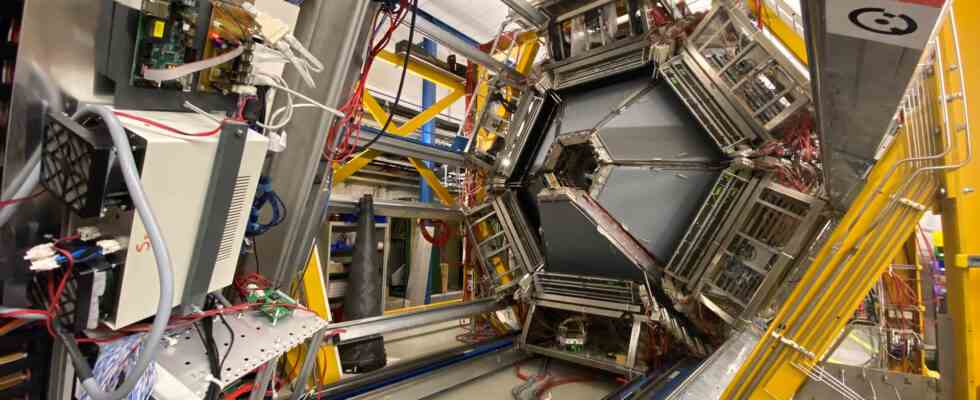in the middle
As of: 02/21/2023 7:09 p.m
A new, large particle accelerator is being built in Darmstadt. Unlike at CERN in Geneva, heavy particles are accelerated there. In addition to basic research, there are also practical applications, for example in cancer therapy.
Access to the new particle accelerator is still hidden behind a large plastic sheet. If you push it aside, the entrance to an underground mega-laboratory will open up. The scientists in Darmstadt are investigating the mysteries of the universe around 20 meters underground.
A new particle accelerator has been under construction on one of the largest scientific construction sites in the world since 2017. The concrete used here would be enough for eight football stadiums in Frankfurt, and the steel for nine Eiffel Towers.
600,000 cubic meters of concrete, 65,000 tons of steel
The circular tunnel for the technical facility has already been built, as well as some other large halls. Scientists reverently call one of them the “Cathedral”. Radiantly white, like the other rooms, it is waiting for complicated apparatus to be installed, with which from 2028 ions will be accelerated to almost the speed of light and made to collide.
The researchers shoot the particles at material samples and can produce cosmic matter for a brief moment at the tiny point of impact. In principle, they want to research the consequences of the Big Bang and find out how new particles and matter are created.
The facility under construction, called FAIR (Facility for Antiproton and Ion Research), is connected to the GSI Helmholtz Center for Heavy Ion Research, which was founded in 1969. The linear accelerator located there will later bring the ions up to a basic speed before they are then brought to almost the speed of light in the new ring accelerator, i.e. almost 300,000 kilometers per second.
A linear accelerator at the GSI Helmholtz Center for Heavy Ion Research. Here the ions are to be brought to a basic speed.
Image: Alex Jakubowski
“Inconceivable,” admits Ingo Peter. He is a physicist himself and works in the press office of FAIR and GSI. “We can’t imagine and understand that either. But we can deal with it, we can conduct research and also implement it technically. But nobody can really, genuinely understand, in the heart,” says Peter.
New elements – including the darmstadtium
In the past, the scientists have discovered six new elements of the periodic table in the already existing facility of the GSI. The elements 107 to 112 now complement the table known from the school – including the darmstadtium. It was created by the fusion of two chemical elements.
“We will also use the new particle accelerator to produce matter,” says Ingo Peter, “as it only occurs in the universe. This way we can explore the universe here in the laboratory on earth.”
3,000 scientists from over 50 countries will conduct experiments in the facility in the future. In addition to basic research, applications that have already been developed are also to be modified. From 1997 to 2008, for example, 440 cancer patients were shot at with the ion beam generated here and brain tumors were treated in this way. This is now being done with a much smaller system, for example at the university clinic in Heidelberg.
advance cancer research
The researchers in Darmstadt are now working on a way of bombarding mobile tumors, for example in the lungs, with an ion beam. To do this, the jet must be precisely aligned and adapted to the movement of the lungs triggered by breathing. “We have to move the ion beam coming from the particle accelerator with the movement of the tumor,” explains physicist Peter.
Two employees analyze tissue samples that have been bombarded with an ion beam.
Image: Alex Jakubowski
In addition, the scientists are working together with ESA on the effects of space rays on astronauts, for example on flights to the moon or Mars. Still a dream of the future, but: “People have undertaken such missions, and our task is to investigate the effects of this cosmic radiation,” says Peter.
To do this, the scientists in the laboratory bombard cell samples with concentrated ion beams. The resulting damage should later help to develop suitable protection for the astronauts. So that science fiction can eventually become reality.

